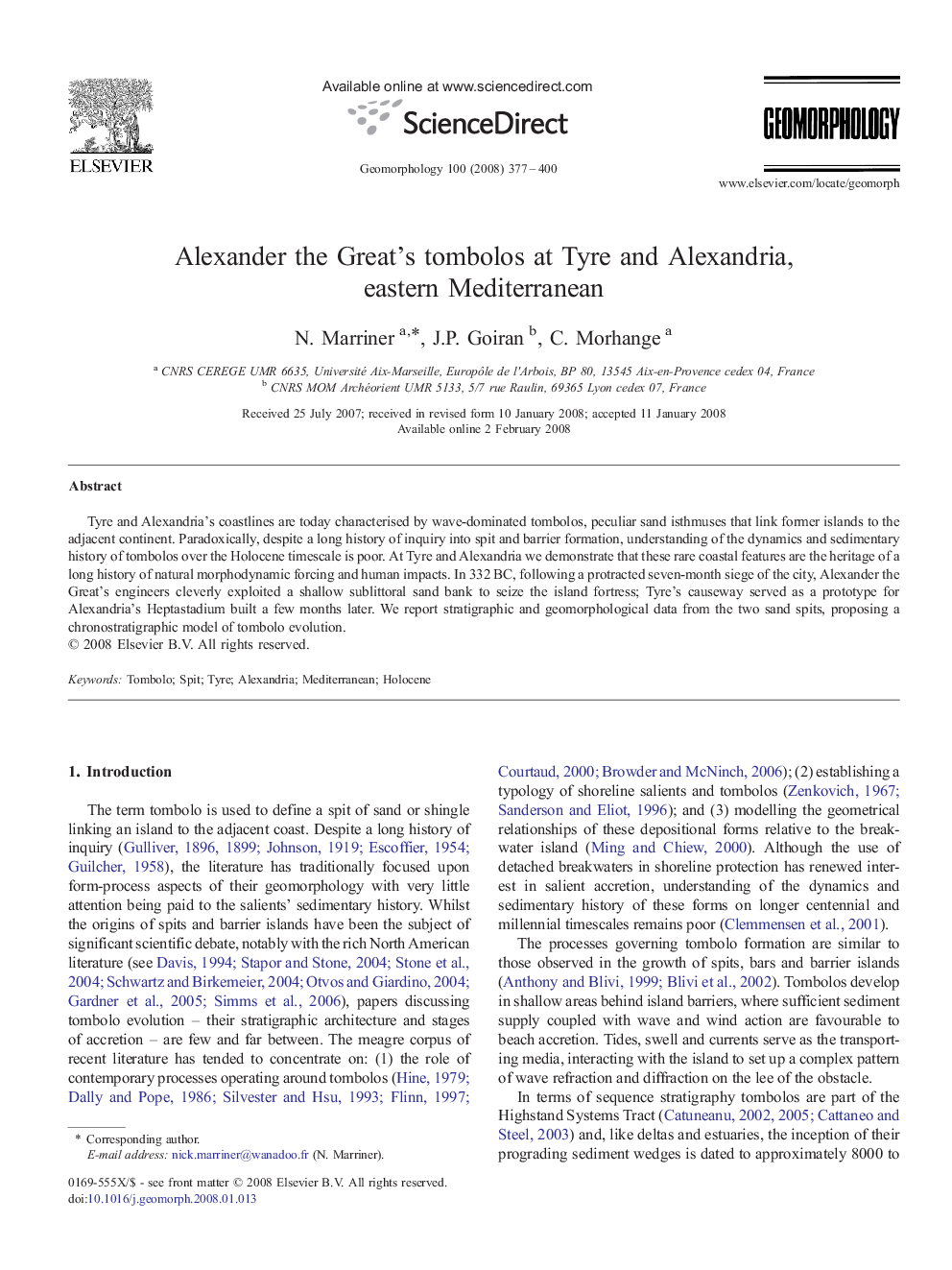| Article ID | Journal | Published Year | Pages | File Type |
|---|---|---|---|---|
| 4686708 | Geomorphology | 2008 | 24 Pages |
Tyre and Alexandria's coastlines are today characterised by wave-dominated tombolos, peculiar sand isthmuses that link former islands to the adjacent continent. Paradoxically, despite a long history of inquiry into spit and barrier formation, understanding of the dynamics and sedimentary history of tombolos over the Holocene timescale is poor. At Tyre and Alexandria we demonstrate that these rare coastal features are the heritage of a long history of natural morphodynamic forcing and human impacts. In 332 BC, following a protracted seven-month siege of the city, Alexander the Great's engineers cleverly exploited a shallow sublittoral sand bank to seize the island fortress; Tyre's causeway served as a prototype for Alexandria's Heptastadium built a few months later. We report stratigraphic and geomorphological data from the two sand spits, proposing a chronostratigraphic model of tombolo evolution.
